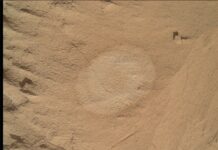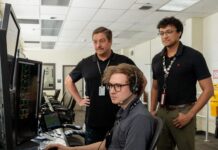Introduction
Since 1987, NASA’s Airborne Science Program (ASP) has heavily relied on a specially modified McDonnell Douglas DC-8 aircraft. This aircraft, stationed at NASA’s Armstrong Flight Research Center in California, has been an instrumental flying laboratory, contributing significantly to various scientific missions and supplying invaluable data to the global scientific community, especially NASA’s Earth science initiatives. However, NASA has recently decided to retire this legendary aircraft, with its final scientific mission conducted in April 2024. The agency plans to replace the DC-8 with a similarly modified Boeing 777, anticipated to offer enhanced capabilities.
For those interested in the extensive history of the ASP, its foundational goals, and its numerous successes, further details can be found in the archived article "Flying in the ‘Gap’ Between Earth and Space: NASA’s Airborne Science Program," published in The Earth Observer, September–October 2020 [32:5, 4–14]. This document provides a comprehensive overview of NASA’s aerial research endeavors.
Workshop Overview
To commemorate the DC-8’s contributions, NASA’s History Office and the Earth Science Division recently organized a workshop titled "Contributions of the DC-8 to Earth System Science at NASA." Held on October 24-25, 2024, at the Mary W. Jackson NASA Headquarters in Washington, D.C., this event celebrated the aircraft’s legacy.
The workshop’s agenda highlighted the DC-8’s significant contributions to Earth Science at NASA, its support for the Aeronautics Research Mission Directorate, and its involvement in space science. Numerous DC-8 veterans, including some who have since retired, participated in the event either in person or virtually. The program featured six panels and roundtable discussions, each focusing on unique aspects of the DC-8’s storied past.
The event brought together 38 speakers, panelists, and moderators from NASA Headquarters, five NASA centers, eight universities, the Search for Extraterrestrial Intelligence Institute, and the National Oceanic and Atmospheric Administration. Additionally, Spanish filmmaker Rafael Luis Méndez Peña premiered a trailer for his documentary film, "NASA-817," during the workshop.
The Tale of the NASA DC-8
The workshop followed an outline that placed the DC-8 within the broader context of NASA’s history of aircraft-based observations, scientific campaigns, and international collaborations. It also highlighted the educational and outreach activities associated with the aircraft.
A History in Context: The DC-8 and NASA’s Airborne Science Program
NASA’s commitment to airborne science dates back to the agency’s founding. The National Aeronautics and Space Act of 1958 emphasized the expansion of human knowledge regarding atmospheric and space phenomena. Over the years, legislation has broadened NASA’s role in atmospheric and Earth system science. To meet these objectives, NASA maintains a fleet of airborne platforms through the ASP, enabling the study of the environment, the development of new technologies, satellite data verification, and space vehicle monitoring.
Before the DC-8, NASA operated two large flying laboratories, both converted Convair 990s. Tragically, both aircraft were lost in catastrophic accidents, severely hampering NASA’s ability to conduct vital scientific and engineering research. In January 1986, following months of bureaucratic challenges, NASA procured a former commercial airliner, the DC-8-72, for $24 million. This investment included modifications to accommodate scientific payloads and crews. The modified DC-8 Airborne Science Laboratory arrived at NASA’s Ames Research Center in the summer of 1987.
Overview Presentations on Airborne Science
Jack Kaye, Associate Director for Research at NASA’s Earth Science Division, delivered the opening remarks at the workshop. He emphasized the uniqueness of NASA’s airborne science, which combines platforms, sensors, systems, personnel, and opportunities. The DC-8’s versatility allowed it to conduct long-range operations under diverse conditions.
Karen St. Germain, Director of the Earth Science Division at NASA Headquarters, later expanded on Kaye’s points, highlighting that while satellite missions often capture the public’s attention, airborne science is a crucial element of NASA’s mission. She described it as the "grassroots of science," where groundbreaking ideas and fledgling sensor technologies are born and tested.
First Flight for the DC-8
NASA frequently conducts field campaigns where ground observations are coordinated with aircraft flights at varying altitudes and satellite overpasses. This approach offers a comprehensive, multifaceted view of the atmosphere over specific regions. A detailed account of two NASA field campaigns from the 1980s and 1990s, along with follow-up missions, is available in the archived article "Reflections on FIFE and BOREAS: Historical Perspective and Meeting Summary" [The Earth Observer, January–February 2017, 29:1, 6–23].
The DC-8 Airborne Science Laboratory made its debut in a high-profile interagency field campaign, the Antarctic Airborne Ozone Expedition (AAOE). This was the first airborne experiment to investigate the chemistry and dynamics of the Antarctic ozone hole. The scientific data collected during AAOE provided undeniable evidence that human-made chemicals contributed to the destruction of ozone over Antarctica, which played a pivotal role in amendments to the Montreal Protocol that banned chlorofluorocarbons.
Estelle Condon, a program manager for AAOE at NASA’s Ames Research Center, shared her recollections of the intense preparations leading up to the DC-8’s inaugural mission. She described the monumental task of equipping the aircraft with relay racks, wiring, and window ports for scientific instrumentation. The ARC staff worked tirelessly, often around the clock, to ensure the aircraft was mission-ready.
Other Noteworthy Field Campaigns Involving the DC-8
Throughout its 37-year history, the DC-8 participated in numerous field campaigns, playing a central role in several of NASA’s research disciplines. Michael Kurylo, Atmospheric Composition Program Scientist at NASA Headquarters, managed NASA’s Upper Atmosphere Research Program, where he developed and implemented a research program focused on stratospheric and upper tropospheric composition. Kurylo outlined the DC-8’s many flights studying stratospheric chemistry beyond the AAOE missions.
Kurylo also highlighted the DC-8’s involvement in tropospheric chemistry investigations, particularly through field campaigns conducted as part of the Global Troposphere Experiment (GTE). He touched on the cultural dynamic between scientists and aircraft operators, noting that scientists were often affectionately referred to as "coneheads" by NASA pilots and ground crew.
James Crawford, a project scientist at NASA’s Langley Research Center, explained that from 1983 to 2001, 16 GTE aircraft-based missions took place, each with unique names and locations. These missions collected extensive atmospheric data, often serving as baselines for subsequent campaigns. The DC-8 was one of several NASA aircraft involved, alongside the Convair-990, Electra, and P-3B.
Joshua Schwarz from NOAA’s Chemical Science Laboratory discussed the aircraft’s role in global atmospheric monitoring. Reflecting on his first experience with the DC-8, he remarked that it was a flying laboratory that made previously impossible experiments feasible.
The People Behind the Aircraft: The DC-8 Community
The DC-8’s size and durability made it ideal for conducting scientific research, fostering a strong community around it. Over three decades, the aircraft hosted numerous investigators from NASA, interagency offices, U.S. universities, and international organizations on extended global missions. The DC-8’s base of operations moved several times between 1986 and 2024, necessitating extensive cross-center cooperation.
Nickelle Reid from NASA’s Armstrong Flight Research Center noted that the workshop gathering was about more than just an aircraft. It was a shared commitment, a testament to decades of passion and dedication from scientists, mechanics, technicians, engineers, project managers, mission planners, and pilots. This dedicated community was essential to the DC-8 program’s success.
The DC-8 as a Means of International Engagement
Yunling Lou from NASA/Jet Propulsion Laboratory spoke about the value of international collaboration. She emphasized that such collaborations not only achieved specific missions but also built capacity and community among global scientists and engineers.
Trina Dryal, Deputy Director at NASA’s Langley Research Center, added that the DC-8 and NASA’s other airborne assets serve as opportunities for science, diplomacy, international collaboration, cross-learning, educational inspiration, and goodwill.
Student Investigations on the DC-8
The DC-8 also impacted the lives of many U.S. students and early career professionals. NASA’s Student Airborne Research Program (SARP), an eight-week summer internship for undergraduate students, offered participants hands-on experience in conducting scientific campaigns. Since 2009, SARP has provided invaluable experience in NASA Earth science research to numerous students.
Berry Lefer, Tropospheric Composition Program Manager at NASA Headquarters, emphasized that the DC-8 was the premier flying laboratory, with education and outreach, and student involvement as hallmarks of the program. Yaitza Luna-Cruz, a SARP alumnus, shared how the program unleashed her potential and shaped her career.
Final Flight and Retirement of the DC-8
The DC-8 Airborne Science Laboratory completed its final scientific mission during the international Airborne and Satellite Investigation of Asian Air Quality mission (ASIA-AQ) in April 2024. The aircraft is now retired and has been donated to Idaho State University (ISU), where students in the aircraft maintenance program work on it to develop real-world technical skills. Gerald Anhorn, Dean of the College of Technology at ISU, noted that students now have the unique opportunity to gain experience with a legendary research aircraft.
Conclusion: Flying Toward the Future – From DC-8 to Boeing 777
While the DC-8 is retired from active service, NASA’s commitment to airborne observations remains strong. The agency has acquired a Boeing 777, which will be modified to support ongoing airborne research efforts. This new aircraft will allow for longer flights, larger payloads, and more researchers to gather data, building on the legacy of the DC-8.
Martin Nowicki, Boeing 777 Lead at NASA’s Langley Research Center, acknowledged that although the DC-8 cannot be replaced, the Boeing 777 will continue its legacy and contribute to the amazing science of the ASP.
For more details on this topic, readers can refer to NASA’s official archives and resources.
For more Information, Refer to this article.


































![Good Lock Features: Discover the Top Favorites [Exploring Good Lock ②] Unveiling the Most Popular Good Lock Features](https://www.hawkdive.com/media/samsung-mobile-good-lock-home-up-3-most-popular-features_thumb728-218x150.gif)